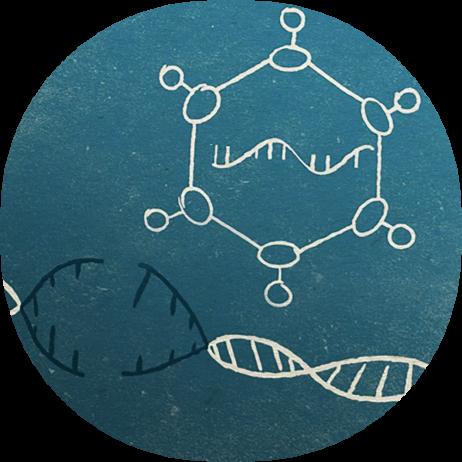Duchenne muscular dystrophy
Vertex is focused on discovering, developing and producing innovative medicines so people with serious diseases can lead better lives. Our scientists don’t see the impossible as an obstacle; they see it as a good place to start.

Vertex is focused on discovering, developing and producing innovative medicines so people with serious diseases can lead better lives. Our scientists don’t see the impossible as an obstacle; they see it as a good place to start.
About Duchenne muscular dystrophy (DMD)
What is Duchenne muscular dystrophy? DMD is the most common muscular dystrophy in children. DMD is a genetic disease, primarily seen in boys, that affects the skeletal muscles, breathing muscles and heart. Initially, the progressive muscle weakness and wasting leads to the inability to walk. As children with DMD grow older, the functions of other muscles begin to decline. Heart problems, including cardiomyopathy, may have visible signs and symptoms by age 10 and affect all people with DMD by age 18. Additionally, people with DMD experience breathing issues starting around age 12, when the function of their breathing muscles begins to decrease.
Several orthopedic issues like curvature of the spine and other spinal deformities further limit mobility and breathing function. As the disease progresses, most people with DMD need to use a wheelchair by ages 12-15 and have a significantly decreased life expectancy due to heart and breathing issues. In addition, the burden of losing upper limb function impacts quality of life with the inability to write, feed and groom themselves, and more. The treatment landscape for DMD has historically centered around improving function and quality of life through a multidisciplinary approach to anticipate, prevent, detect and treat complications (respiratory, orthopedic, bone, psychosocial chronic management). Current treatments include medications that aim to slow down disease progression and/or assist with managing symptoms, and supportive care (such as physical therapy). There is currently no cure for DMD.
How is DMD diagnosed? Children with DMD typically present with symptoms between 3 and 5 years of age. The diagnosis is confirmed with a genetic test.
What is the underlying cause of disease? DMD is a chromosomal X-linked recessive disorder caused by mutations in the dystrophin gene, which is responsible for producing dystrophin protein. Dystrophin is a key part of a protein complex that maintains muscle integrity during normal activity and exercise. Mutations to the dystrophin gene prevent the body from making normal amounts of dystrophin. This lack of dystrophin causes progressive muscle weakness and muscle degeneration.
The Vertex approach
We’re focused on researching and developing genetic therapies aimed at treating the underlying cause of DMD. The genetic cause of DMD has been known for decades, and with advances in gene editing, we now have a potential opportunity to address this devastating disease at its root cause.
We are investigating a novel approach to treating DMD by delivering CRISPR/Cas9 gene-editing technology to muscle cells to achieve precise changes in the targeted DNA sequence. Specifically, we’re researching CRISPR/Cas9 gene-editing technology with the goal of restoring near-full length dystrophin protein expression by targeting certain mutations in the dystrophin gene that cause the disease. Due to the number of mutations that can cause DMD, our research consists of multiple different gene-editing programs to potentially address many of the disease-causing mutations.
Pipeline
These programs are investigating treatments or outcomes that have not received approval from a health authority. The information presented is not intended to convey conclusions of safety or efficacy. There is no guarantee that the outcome of these studies will result in approval by a health authority.


